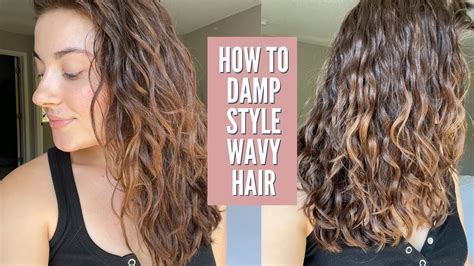Introduction
Wet and wavy hair, a captivating texture that exudes effortless beauty and versatility, has inspired countless interpretations and applications in various fields. From fashion and beauty to home décor and art, the allure of wet and wavy aesthetics continues to captivate hearts and minds around the globe.

Fashion and Beauty: Embracing the Wet and Wavy Look
The wet and wavy hair trend has taken the fashion and beauty industry by storm. Stylists and celebrities alike have embraced this look, showcasing its versatility and glamour.
Wet Hair Looks: A Touch of Glamour
Celebrities like Bella Hadid and Kendall Jenner have made wet hair looks a red carpet staple. They achieve this style by applying a generous amount of hair gel to damp hair, then combing it through to create defined waves.
Wavy Bobs: A Timeless Classic
Wavy bobs have become a popular hairstyle for women of all ages. The short length enhances the natural bounce of waves, creating a youthful and playful look. According to Elle magazine, the wavy bob is one of the top 20 hairstyles for 2023.
Home Décor: Creating a Wet and Wavy Ambiance
The wet and wavy aesthetic has also made its way into home décor, creating a sense of tranquility and movement.
Wavy Wallpaper: A Splash of Coastal Charm
Wavy wallpaper adds a touch of coastal charm to any room. The subtle undulations of the pattern evoke the gentle rhythm of ocean waves, creating a relaxing and inviting atmosphere.
Wavy Curtains: A Flowing Drape
Wavy curtains flow gracefully, creating a sense of movement and depth in a room. Their soft, ethereal texture adds a touch of elegance to any décor.
Art: Capturing the Essence of Water
Wet and wavy elements have inspired countless works of art throughout history.
Impressionist Masterpieces: Capturing the Fleeting Beauty
Impressionist painters like Claude Monet and Pierre-Auguste Renoir used wet-on-wet techniques to capture the fleeting beauty of water and waves. Their works convey a sense of spontaneity and movement, immersing viewers in the essence of the natural world.
Contemporary Sculptures: Embodying the Fluid Form
Contemporary sculptors have explored the wet and wavy aesthetic in innovative ways. Artists like Jaume Plensa and Anish Kapoor create sculptures that evoke the fluidity and shape-shifting nature of water.
Beyond Waves: Embracing New Applications
The wet and wavy aesthetic has sparked creativity in a wide range of fields, generating innovative and unexpected applications.
Wavy Architecture: A Fluid Design Language
Architects are experimenting with wavy structures, drawing inspiration from the fluid forms found in nature. These buildings create a sense of dynamism and movement, challenging traditional architectural norms.
Wavy Robotics: Inspired by Nature
Researchers have developed wavy robots inspired by the undulatory motion of marine animals. These robots can navigate complex environments and perform underwater tasks with greater agility and efficiency.
Common Mistakes to Avoid: Enhancing the Wet and Wavy Aesthetic
While the wet and wavy aesthetic is captivating, there are a few common mistakes to avoid when incorporating it into different applications:
Too Much Gel: Creating Unnatural Waves
Using excessive hair gel can weigh hair down and create unnatural-looking waves. Use a moderate amount and distribute it evenly to achieve defined waves without rigidity.
Overdone Patterns: Creating Visual Clutter
In home décor, it’s important to avoid using too many wavy patterns in one space. This can create visual clutter and overwhelm the eye. Instead, balance wavy elements with solid colors and simple patterns.
Lack of Texture: Missing the Dynamic Element
When capturing the wet and wavy aesthetic in art, pay attention to texture. The key is to create a sense of depth and movement. Experiment with different painting techniques and materials to achieve the desired effect.
Conclusion
Comparable to wet and wavy hair, the wet and wavy aesthetic has inspired countless interpretations and applications, enriching various fields. From fashion to art to robotics, the allure of wet and wavy forms continues to captivate our imagination, offering a glimpse into nature’s boundless beauty and creativity.
Tables
Table 1: Wet and Wavy Hair Trends in Fashion and Beauty
| Trend | Description |
|---|---|
| Wet Hair Looks | Applying hair gel to damp hair for defined waves |
| Wavy Bobs | Short-length bobs that enhance the natural bounce of waves |
| Beachy Waves | Loose, tousled waves inspired by coastal living |
Table 2: Wavy Elements in Home Décor
| Element | Effect |
|---|---|
| Wavy Wallpaper | Adds a touch of coastal charm and tranquility |
| Wavy Curtains | Creates a sense of movement and depth |
| Wavy Furniture | Introduces an organic, flowing aesthetic to a room |
Table 3: Wet and Wavy Influences in Art
| Artist | Movement | Key Works |
|---|---|---|
| Claude Monet | Impressionism | “Impression, Sunrise” (1872) |
| Pierre-Auguste Renoir | Impressionism | “Bal du moulin de la Galette” (1876) |
| Jaume Plensa | Contemporary Sculpture | “Echo” (2011) |
Table 4: Innovative Applications of the Wet and Wavy Aesthetic
| Field | Application |
|---|---|
| Architecture | Wavy structures creating a sense of dynamism |
| Robotics | Wavy robots inspired by marine animals for underwater navigation |
| Technology | Wavy displays for enhanced visual effects |
